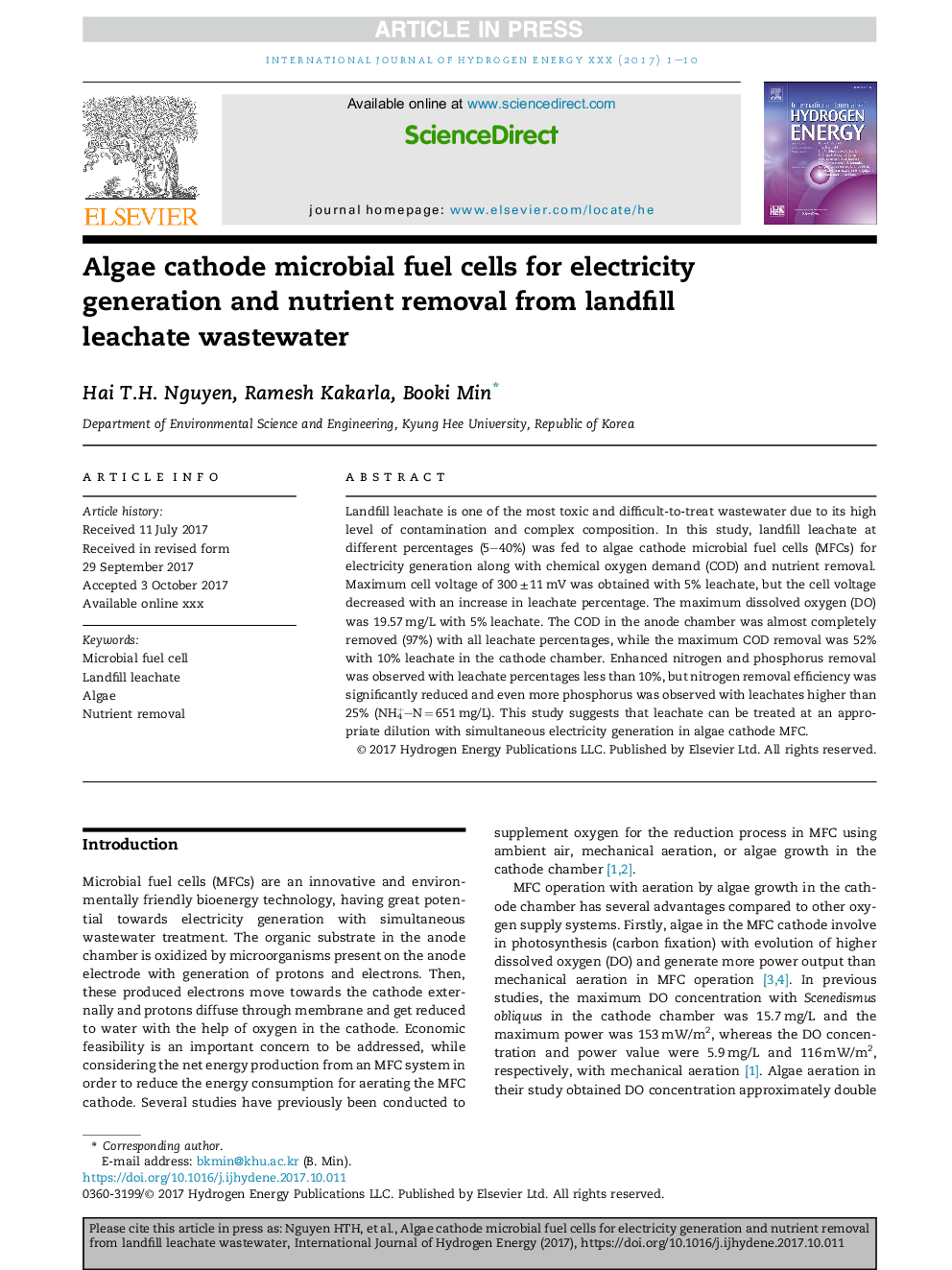| Article ID | Journal | Published Year | Pages | File Type |
|---|---|---|---|---|
| 7709230 | International Journal of Hydrogen Energy | 2017 | 10 Pages |
Abstract
Landfill leachate is one of the most toxic and difficult-to-treat wastewater due to its high level of contamination and complex composition. In this study, landfill leachate at different percentages (5-40%) was fed to algae cathode microbial fuel cells (MFCs) for electricity generation along with chemical oxygen demand (COD) and nutrient removal. Maximum cell voltage of 300â¯Â±â¯11â¯mV was obtained with 5% leachate, but the cell voltage decreased with an increase in leachate percentage. The maximum dissolved oxygen (DO) was 19.57â¯mg/L with 5% leachate. The COD in the anode chamber was almost completely removed (97%) with all leachate percentages, while the maximum COD removal was 52% with 10% leachate in the cathode chamber. Enhanced nitrogen and phosphorus removal was observed with leachate percentages less than 10%, but nitrogen removal efficiency was significantly reduced and even more phosphorus was observed with leachates higher than 25% (NH4+Nâ¯=â¯651â¯mg/L). This study suggests that leachate can be treated at an appropriate dilution with simultaneous electricity generation in algae cathode MFC.
Related Topics
Physical Sciences and Engineering
Chemistry
Electrochemistry
Authors
Hai T.H. Nguyen, Ramesh Kakarla, Booki Min,
